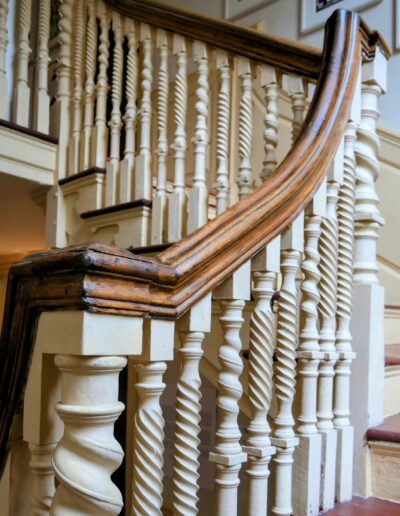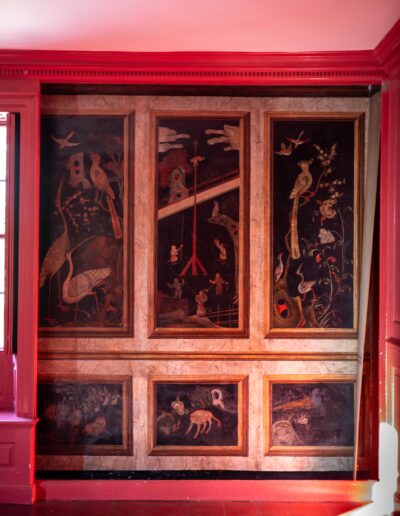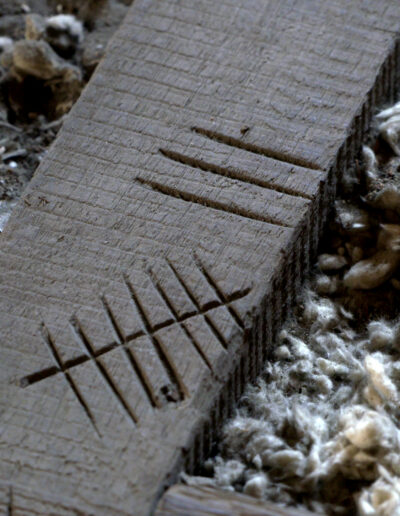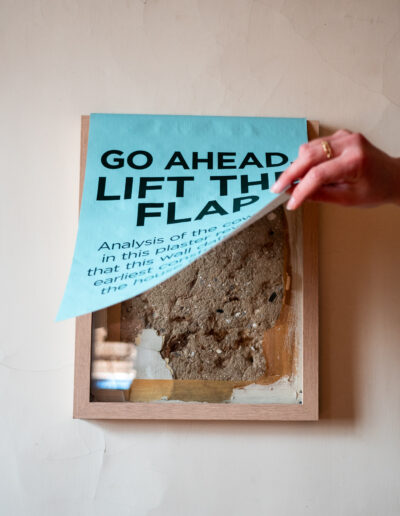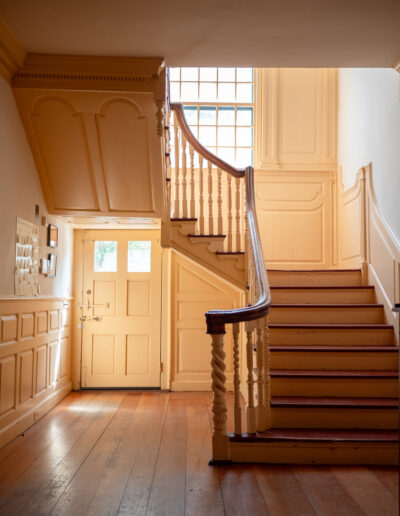Vernon
House
One House. Many Stories.
The William Vernon House (circa 1708 & 1760) is one of the most historically significant buildings in Newport, Rhode Island, and now hosts contemporary dialogue, community engagement, and a preservation learning lab.
Explore Vernon House
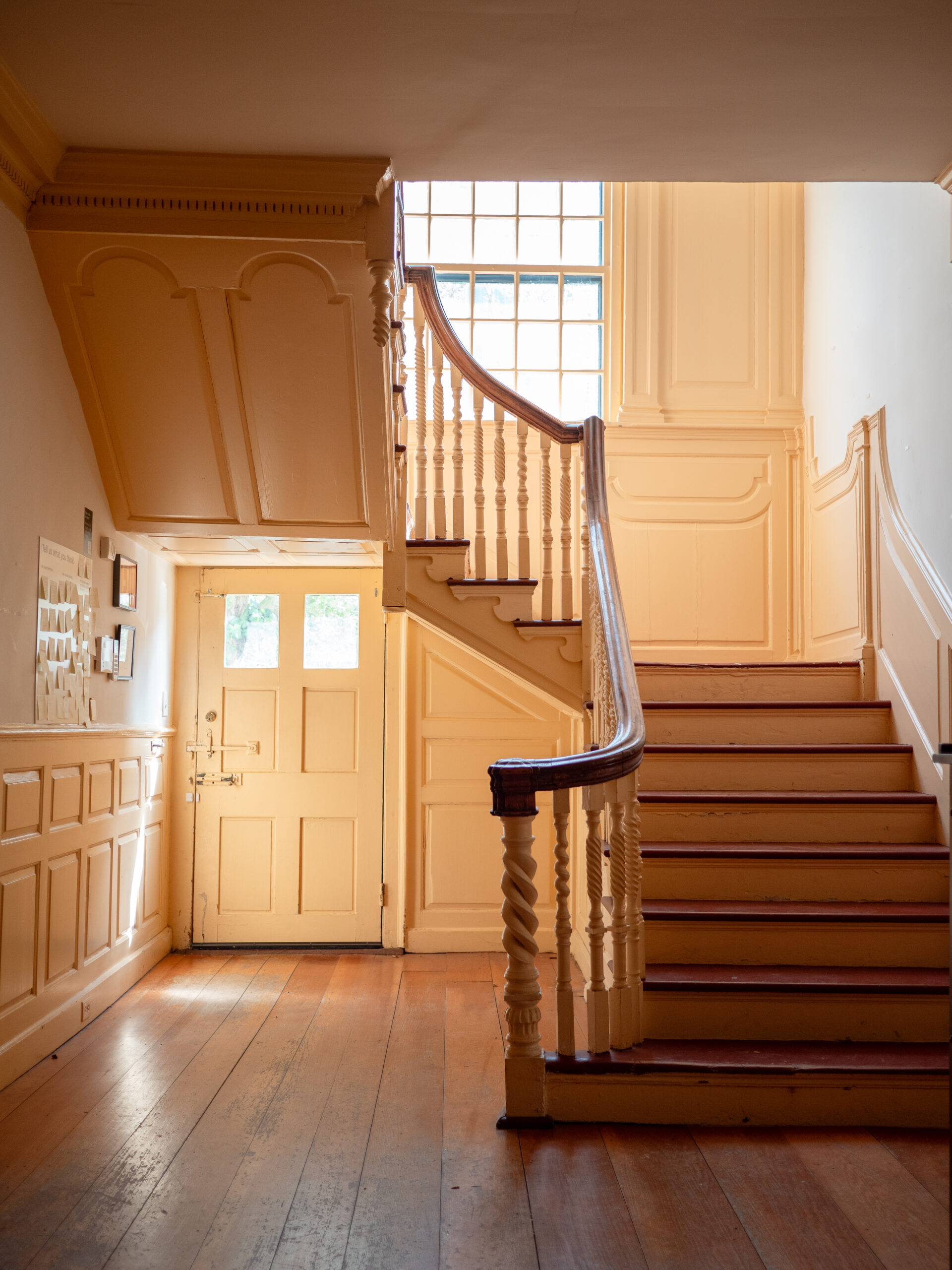
46 Clarke Street (otherwise known as “The Vernon House”) is not a house museum: it is a place for expansive story-telling, contemporary dialogue, and preservation trades skill-building. While NRF has become the process of investigating the architectural, material, and historical aspects of the house, there is much more to discover. NRF looks forward to continuing discoveries, collaborating with community partners and scholars, and sharing more stories.
The house is connected to many integral stories of not only the history of the city of Newport but the broader history of colonization, global trade, and historic preservation’s impact on city planning. The house was gifted to NRF in 2009, and since then, NRF has been working to better understand the long-term preservation needs of the building as well as working towards researching and interpreting the history of the house and its inhabitants. Recently, NRF completed a historic structures report, which involved historical research on the building, archeology, paint analysis, and dendrochronology to uncover a more complete history of the house.
The Panels
One of the most remarkable features of the Vernon House is a series of Chinoiseries panels in the Great Room.
Through investigations into the creation of the Chinoiseries panels—thought to be unique, we will start the process of contextualizing the panels within not only the 18th-century world, but also for 21st-century audiences.
The goal is that a better understanding of the material culture of the panels will lead to a more expansive project on the long-term stewardship and conservation of the panels, as well as opportunities for public dialogue on relevant issues, salon-style discussions, and contemporary creative responses through art, literature, music, craft, etc.
Vernon House History
This timeline explores the history of the Vernon House and its inhabitants over 300 years.
Early Years

___________________________
In 1708, Captain and painter William Gibbs (1681-1729) and wife Elizabeth Robbins owned a lot on this site. The initial structure was roughly half the size of the building today, consisting of two rooms downstairs and two upstairs. In 1744, Gibbs’ grandson William Gardner Jr. sold the house and lot to Patrick Grant, who then sold it to Charles Bowler in 1748.
In November of 1759, Charles Bowler sold the property to his son Metcalf Bowler (1726-1789) — a successful merchant, prominent judicial leader, and Revolutionary War “villain.” He and his wife Anne Fairchild Bowler (1734-1804) likely began to live in the house at this time.
The house underwent a major renovation and expansion this year, nearly doubling the size of the building.
The Vernons

___________________________
In 1772, a mortgage on the property was held by William Vernon (1719-1806) — enterprising merchant, civic, economic, and religious leader, prolific and determined slave trader, and Revolutionary War hero. Two years later, Metcalf Bowler sold the house to William. In December of 1776, William Vernon fled Newport as the British fleet occupied Newport. He took with him three enslaved persons — Barre, Accram, and Cesear — and left behind Cadys, Belinda, and her child.
Another enslaved member of the Vernon household, carpenter Cato Vernon, enlisted in the Rhode Island 1st Regiment, which meant that he was manumitted and was “absolutely free” from enslavement through this military service. He served for five years and was granted a badge of distinction for “bravery, fidelity, and good conduct.”
On July 11, 1780, the French Fleet arrived in Newport. The commander in-chief of the French forces, the Comtede Rochambeau, used the house as his residence and the headquarters of the French forces until the summer of 1781. On March 6, 1781 General George Washington slept here (according to descriptions of the Ball held in his honor).
In December of 1806, William Vernon died; sons Samuel (1757-1834) and William H. Vernon (1759-1833) inherited the house and land. Samuel was an enormously wealthy merchant and the first president of Newport Bank. William H. was a passionate Francophile and a collector of “Old Master” paintings — which he displayed in this house.
A listing for 34 Clarke Street in the 1850 Census lists 10 members of the Vernon household, including Elizabeth A. Vernon, 86, who “Owns $5000 worth of Real Estate”, and Sophia Vernon, 48.
Changing Hands

___________________________
On April 11, 1872 Sophia P. Vernon deeded the house and lot to Harwood E. Read. By the end of the decade, the house was rented to the United States Geological Bureau for offices and a laboratory. In the Fall of 1879 a wall mural (dating to pre-1760) was discovered behind the overmantle panel in the northwest chamber (Room 201).
On March 29, 1913, the house was sold to the Family Welfare Society (est.1878). The Family Welfare Society was a female-led community service organization (and funded by female philanthropists) that addressed social inequalities facing children and families in Newport. Today, it operates asChild & Family Services of Newport County.
In 1937, workers repairing panels in the first floor northwest room discovered painted Chinoiserie
murals behind the walls. Marion L. Bissell — executive secretary of the Family Welfare Society — and Edith May Tilley — librarian and corresponding secretary of the Newport Historical Society — announced plans for the restoration and preservation of the murals. They also noted the intention to study the murals and make them accessible to the public.
From 1938 to 1965 Various sections of the house are in use by philanthropic organizations addressing social, physical, and mental health needs (many of them are female-led and female-staffed).
The Maganini Family

___________________________
In 1965, “the Vernon House…one of the best known of Newport’s historic Colonial houses, is being sold by the Family Services Society to Mrs. Margaretta Kingsbury Maganini”. Margaretta Maginini’s restoration efforts (including floor plans and paint choices) relied heavily on preservationist and architectural historian Antoinette Downing’s (1904-2001) research and work.
In 1968, Doris Duke founded the Newport Restoration Foundation.
NRF

___________________________
In 2009, the Maganini family transferred ownership of Vernon House to the Newport Restoration Foundation (with the condition that Margaretta’s granddaughter could continue living in the house and pay market value rent as long as she would like). She moved out of the residence in 2018.
In 2020 NRF undertook a Historic Structures Report, which involves building historical research, archeology, paint analysis, and dendrochronology to uncover a more complete history.
Step Inside
There are many layers to this house.
Go behind the walls, look under the floorboards, and discover over three centuries of people who have left their mark.

